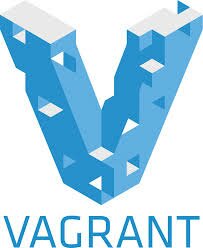docker-wildfly> vagrant up
Bringing machine 'default' up with 'docker' provider...
==> default: Docker host is required. One will be created if necessary...
default: Vagrant will now create or start a local VM to act as the Docker
default: host. You'll see the output of the `vagrant up` for this VM below.
default:
default: Box 'mitchellh/boot2docker' could not be found. Attempting to find and install...
default: Box Provider: virtualbox
default: Box Version: >= 0
default: Loading metadata for box 'mitchellh/boot2docker'
default: URL: https://atlas.hashicorp.com/mitchellh/boot2docker
default: Adding box 'mitchellh/boot2docker' (v1.2.0) for provider: virtualbox
default: Downloading: https://atlas.hashicorp.com/mitchellh/boxes/boot2docker/versions/1.2.0/providers/virtualbox.box
default: Successfully added box 'mitchellh/boot2docker' (v1.2.0) for 'virtualbox'!
default: Importing base box 'mitchellh/boot2docker'...
default: Matching MAC address for NAT networking...
default: Checking if box 'mitchellh/boot2docker' is up to date...
default: Setting the name of the VM: docker-host_default_1421277252359_12510
default: Fixed port collision for 22 => 2222. Now on port 2203.
default: Clearing any previously set network interfaces...
default: Preparing network interfaces based on configuration...
default: Adapter 1: nat
default: Forwarding ports...
default: 2375 => 2375 (adapter 1)
default: 22 => 2203 (adapter 1)
default: Running 'pre-boot' VM customizations...
default: Booting VM...
default: Waiting for machine to boot. This may take a few minutes...
default: SSH address: 127.0.0.1:2203
default: SSH username: docker
default: SSH auth method: private key
default: Warning: Connection timeout. Retrying...
default:
default: Vagrant insecure key detected. Vagrant will automatically replace
default: this with a newly generated keypair for better security.
default:
default: Inserting generated public key within guest...
default: Removing insecure key from the guest if its present...
default: Key inserted! Disconnecting and reconnecting using new SSH key...
default: Machine booted and ready!
==> default: Syncing folders to the host VM...
default: Installing rsync to the VM...
default: Rsyncing folder: /Users/arungupta/workspaces/vagrant-images/docker-wildfly/ => /var/lib/docker/docker_1421277277_78698
==> default: Warning: When using a remote Docker host, forwarded ports will NOT be
==> default: immediately available on your machine. They will still be forwarded on
==> default: the remote machine, however, so if you have a way to access the remote
==> default: machine, then you should be able to access those ports there. This is
==> default: not an error, it is only an informational message.
==> default: Creating the container...

 Vagrant is a simplified and portable way to create virtual development environments. It works with multiple virtualization software such as VirtualBox, VMWare, AWS, and more. It also works with multiple configuration software such as Ansible, Chef, Puppet, or Salt.
Vagrant is a simplified and portable way to create virtual development environments. It works with multiple virtualization software such as VirtualBox, VMWare, AWS, and more. It also works with multiple configuration software such as Ansible, Chef, Puppet, or Salt.